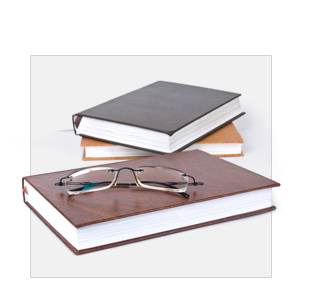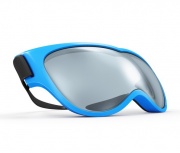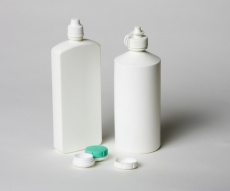Contents |
Eye Injuries and Foreign Bodies: First Aid for Children
Whenever a child is injured, we all want to help, but sometimes we just don’t know what to do. Here are some helpful tips for first aid when a child injures an eye.
First, here are some common-sense precautions to take to prevent injury to your child or yourself.
- Small flying objects like debris from a lawn mower or sawdust from a workbench can often enter the eye and even penetrate to the interior of the eye. Always use eye protection when working in such areas, and make sure everyone else who enters the area has eye protection, too.
- Using eye protection in any situation with small flying objects or in the presence of fluids that could splash into the eyes should be an absolute rule.
- When using any solvent or other fluids, read the label first so as to know what to do if the substance gets on the skin or in the eyes, and make sure you and everyone else in the area wears eye protection.
Trauma
If a child has been hit in the eye area, try to keep the child from touching the eye and possibly causing more injury. Being careful not to put pressure on the eye or surrounding tissues, use a foam drinking cup to make a shield over the eye, taping it to the bony areas of the skull around the eye, not to the eyelids or other nearby ocular surfaces.
Do not use water to rinse the eye area, but do call for an ambulance to get the child into the emergency department of the nearest hospital as soon as possible. Blunt force trauma, like that experienced in an automobile accident, for example, can cause the fragile bones that form the cone-shaped area where the eye and the muscles that control its movement are located.
Most people refer to the bruising that can occur after an eye injury as a “black eye,” which is caused by broken blood vessels leaking into the area under the skin, causing swelling and the familiar black-and-blue appearance of bruising. Any person of any age who has received a blow to the eye area strong enough to cause such bruising should be seen by an emergency specialist right away. The bones forming the outer part of the skull are relatively strong and provide some protection from larger objects coming toward the eye, but if the eye is pushed back into the space behind it, the force can cause those bones to fracture. Called a blowout fracture, this must be either ruled out or treated, because the muscle tissues can become trapped in the broken area and can cause permanent double vision if they restrict the muscle’s movements.
If there are no fractures present, use ice packs or a cold cloth to help reduce swelling, but be careful not to put pressure on the area.
Foreign Body
If an object has entered the eye, do not try to remove it as this may make the damage worse or force it in deeper. Use an eye shield or a foam drinking cup to shield the eye from further injury, and call for an ambulance as soon as possible.
If there is a foreign body sensation in the eye that seems to move, use clean water or a sterile saline solution to rinse the eye thoroughly, including the areas under the eyelids. If the foreign body isn’t embedded in the tissue, it may wash out fairly easily, but if it doesn’t, seek medical help as soon as possible. Do not allow the child to touch the eye or rub it, as this can cause the object to embed itself, or scratch the ocular surfaces, which can cause injury itself.
(Right: Contact lens solutions, made for rinsing the lenses, are perfect when the situation calls for flushing fluids or small foreign bodies out of the eyes. Keep two or more bottles in your first aid kit.)
Chemicals or other Fluids
If a child has gotten fluid splashed into his or her eyes, read the label on the package to find out what the proper first aid treatment will be; follow instructions accordingly.
If the label says to flush with water, do so for at least 15 minutes, making sure the water gets into all areas of the ocular surface, including under both eyelids. This can be done by holding the child’s head under a running tap, or by pouring water over the head into a container. If possible, use your clean fingers to pry the lids open so as to ensure the greatest possible coverage. Call for an ambulance as soon as possible, or have someone else do so, so that help will be on its way while you are rinsing the eyes.
If the label of the fluid is not available, call for an ambulance and get medical help as soon as possible. Do not rinse, because some chemicals have effects that can be worsened when they are mixed with water.
Other Situations
If you see any of the following symptoms, seek immediate medical attention by calling for an ambulance:
- Obvious pain in or around the eye
- Obvious vision problems
- Torn or cut eyelid
- One eye that doesn’t move as much as the other, or that doesn’t follow movements of the other eye
- A difference in size of one pupil from the other, or if one pupil does not contract or expand in response to light
- Visible blood anywhere in or around the eye
- Something embedded in the ocular tissues
- Complaints that there is something in the eye that can’t be removed.
In the event of an eye injury to a child, call for an ambulance for the trip to the emergency department, rather than drive there yourself.
A great addition to your first aid kid would be at least two bottles of contact lens rinsing solution, which is useful for rinsing not only the eyes, but for cleaning an abrasion elsewhere. In any retailer that stocks contact lens solutions, choose one that is labeled for use in rinsing the lenses before inserting them, because this is the type that is meant to be used in the eye. Any brand is OK, even a generic or store brand, but do replace them periodically because the preservatives lose effectiveness after a period of time, as reflected in the expiration date on the bottle. These solutions usually come in squirt-type bottles that are very helpful when trying to rinse up under an upper eyelid.
It is not possible to prevent all accidents, but it is possible to prevent some of them, but using safety glasses or goggles, batting helmets, face masks or other safety equipment. Leave a pair of safety glasses hanging on the handle of the lawn mower, or from a piece of equipment on the workbench, so they will be handy and act as a reminder.






